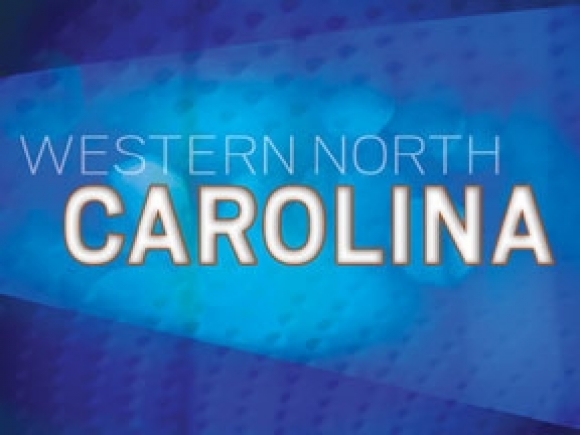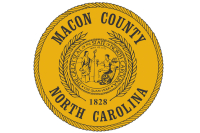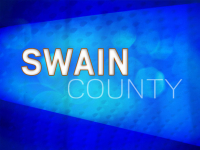African-American heritage at Hayesville museum, slave cemetery

Clay County residents joined with Western Carolina University representatives in celebrating the county’s African-American heritage with the opening of a new exhibit in the Old Jail Museum and a tour of a previously abandoned slave cemetery, both in Hayesville, on Saturday, May 27.
WCU was cited for significant contributions to the project, which was sponsored by the Clay County Historical and Arts Council. The exhibit focuses on three aspects of black life in a small mountain town ― slavery, public education and religion ― while the cemetery, located on Slave Drive and after years of neglect and scattered headstones, now has ongoing research into its burials.
Folk history, oral traditions and property records provided general parameters for an abandoned cemetery in the Moore Hill community, but largely the site had held more questions than answers. But then, WCU faculty and students came together with community volunteers, with support from the property owner, Guinnell Hunter.
“Too many forgotten cemeteries like this one have been bulldozed or built over,” Hunter said. “It’s been great to see folks come together and work to reclaim what is all of our heritage, and Western has been a big part of it. Those graves may be on my land, but this is a shared history and for now, I’m just the caretaker.”
Jim Glock, a member of the Clay County Historical and Arts Council, got involved after a visit and immediately delved into research about the cemetery. He found property records that provided the name of the landowner prior to the Civil War; census records show he was a slaveholder. Glock concluded that the interred probably died between 1838 to 1857.
“I got hooked the first time I saw the place and knew what it held,” Glock said. “I’m not a historian, just a retired soldier and engineer who got motivated and had the time to conceive of, and manage, this project.”
Glock got in touch with Ann Woodford, founder of One Dozen Who Care, an African-American led community development organization for westernmost North Carolina. Woodford, a WCU alumna, then helped him make key connections at her alma mater. She recently worked with WCU’s Mountain Heritage Center as guest curator for the exhibit “When All God’s Children Get Together,” which looks at the role of church, spiritual music and hymns in the African-American population in the region.
A WCU team began surveying the site, trying to pinpoint grave locations. Lisa Briggs, professor of criminology and criminal justice and a canine “cadaver dog” handler off-campus, volunteered to assist in finding grave locations with her dog, Laila. Blair Tormey, a researcher in WCU’s Program for the Study of Developed Shorelines, used ground penetrating radar, also known as GPR, to confirm and pinpoint the locations. WCU’s Forensic Osteology Research Station director Cheryl Johnston looked with an expert’s eyes at the forensic evidence, such as surface depressions, soil probing and soil color, and collaborated with Tormey.
“Laila indicated on graves and then Blair confirmed them with GPR,” Briggs said. “The work took on a special meaning for me, as it reminds one of the inhumanity and injustice that existed in our society. For loved ones to not be able to care for, or even know, the location of family graves is sad and incomprehensible to me.
“I think some people would be surprised to learn that slavery existed in the mountains and slaves were buried in this area. I think it is especially important to be reminded of the historical facts, that in most situations, these graves were unmarked and loved ones were not allowed to care for and keep up the cemetery,” she said.
A key discovery was when Tormey found a carved headstone, a simple rounded rock with the faintly etched letters “A” and “D,” then another “A.” It confirmed the plot is indeed a cemetery, he said, adding its presence elevates the importance of preserving the site. “Finding the carved headstone was the out-of-the-park home run,” Tormey said.
During the May 27 event, Tormey led a tour of the cemetery and demonstrated the GPR while relating some of the tasks that led to marking graves with pin flags. “We found the combination of a cadaver dog and GPR is the most effective and efficient method,” he said. “We have more than a dozen graves located, and I think more are there. Like any scientific and forensic undertaking, we process the information, collect the data and catalog findings. My ultimate goal is to create a map of the graves and have more suitable markers to indicate these final resting places. It is what they deserve.”
In August 2016, the site was bestowed the name “Freedom Cemetery” by the Rev. Charles Lee of the Waynesville Missionary Baptist Association, who said, “I think at the end of a road named ‘Slave Drive’ that the cemetery should be named ‘Freedom Cemetery.’”
At the makeshift entrance to the cemetery, a concrete bench inscribed with “The freedom they never knew in life, they found in death” sits next to a polished stone monument with these words: “In this area lie the remains of African-American slaves whose identities and contributions are known but to God.”





